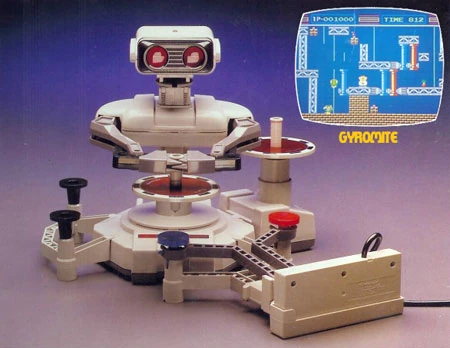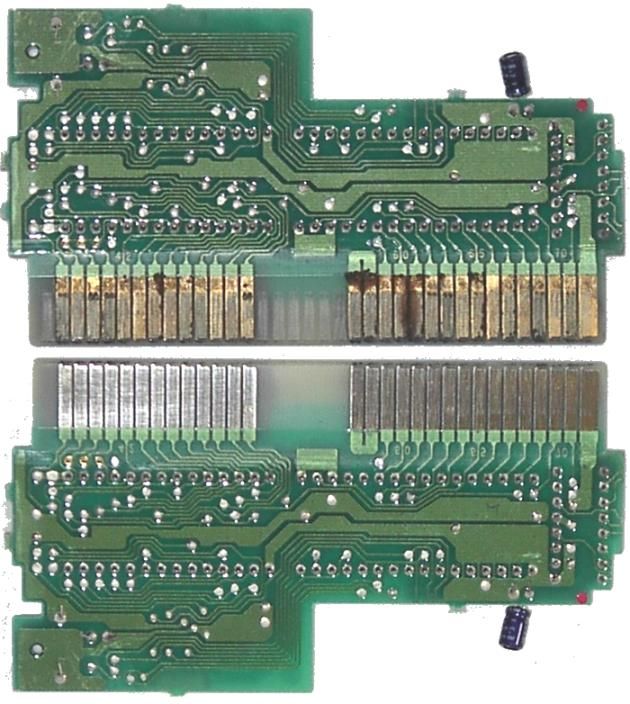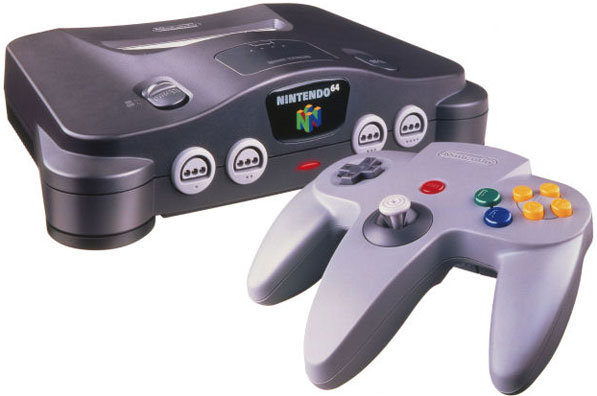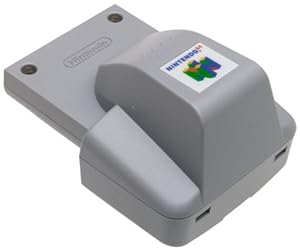A retrospective look at one of the greatest Consoles of all time.
Not including Nintendo's 'Color TV Game', the NES was Nintendo's first real stab at the home video game market. And what a stab it was. Comparatively to the previous well known 8-bit systems of the day (the Atari for those too young to remember), The NES featured superior graphics, betters sound and a controller that consisted of more than a joystick and one button, and even launched with the famed 'Light Gun'. And with one of the most robust line-ups of launch titles to date (still impressive by today's standards), the NES grew to be one of the most successful video game consoles of all time.
The Nintendo Entertainment System didn't have the smoothest of launches in the US however. The NES launched in America in 1985, shortly after the time Atari was on it's way out (largely due to the ET scandal). It was so tough for Nintendo to get a leg into the market, largely as many stores refused to even stock game systems any more, they had to get clever. And that's why they decided to market themselves as a 'Home Entertainment System', even through in a few gimmicks like R.O.B. the robot. Even with the rough beginnings, the Nintendo was a quick success, turning themselves into the 'must have' Christmas present for the next 5 years.
Nintendo's first game line-ups could be considered baby steps for them if you think of how the console evolved. Even with the somewhat rough beginnings, Nintendo's early days (including the bundled games at launch) included Super Mario Bros. and Duck Hunt, which are games that are still loved today. The games on the NES quickly evolved as well. Shortly into the system's life, Nintendo released a game so massive, it required something no console system had ever seen, saves. This game would be the famed 'Legend of Zelda'. And they only continued from there. The NES allowed Nintendo to produce games of such quality (and fun), it launched numerous franchises and characters that are still relevant today.
Let's take a brief look at the evolution of Nintendo's games. If you look at the start, it's very blocky. The graphical limitations are easily seen. You can make out what the characters are supposed to be, but blocky. The sounds were also pretty basic. All the sounds in the early days (and this includes any music track in the game) are all single note sounds. Even with these limitations, the designers at Nintendo, and the composer Koji Kondo were able to produce memorable characters and music. Shortly into the NES's life, the developers were learning how to design around the system, finding what it was capable of. This allowed for some fantastic innovation. They were developing games with top down perspective, driving games with a 1st person perspective. If you think about it, games that utilized the Light Gun were the first console based First Person Shooters. Yes they were limited to the technology of the time, and are more accurately known as 'Rail Shooters', but these were the first steps in that direction. On top of that, Nintendo started greatly enhancing the sounds the NES was able to make. This not only allowed for much more robust soundtracks, even some games were capable of voice... Sorta (example: Bayou Billy).
One of Nintendo's great innovations were it's controllers. The controllers were some of the first to have more than 1 action button, and oddly one of the first to allow you to pause the game with the start button (Start to stop, must be where Windows got it from). It was one of the first, purely hand held controllers, without making us use some facsimile of a Joy stick. Most of the early joystick controllers required some sort of table to sit at to really be usable, with some feeble attempt of using suction cups on the bottom, and would come loose at the most inopportune moment. What the NES controller allowed us to do was move, steer, whatever with the left hand and do whatever action is required with the right hand . This was an evolution that can be likened to the evolution of man growing thumbs. This was such a good controller setup, it's still the base of almost all hand-held controller layouts to this day.
I don't want this to just be a parade with out great the NES was. As with everything, it was not without faults, and the NES had some biggun's. First was the setup. To this day, I've yet to see a setup that was more un-reliable and fiddly, and I have a Wii. They didn't come with any standard component cables, but an adapter to work with your Cable port (The RF adapter). I understand this was to allow the NES to work, even if you didn't have a VCR. But this allowed for the worst possible picture quality, and the component cables weren't even a stock option.
And once you did figure out how to hook the thing up, you had to deal with one of the most un-reliable consoles to ever be released (maybe aside from the X-Box :p). All of us had our tricks, having the cartridge in just the right, un-plug and plug it back in, hold power and reset at the same time, jump up and down, sacrifice a chicken, and none of it helped. Sadly, I think we all knew it too. What was truly at fault was 2 things, dust and corrosion. Even though the NES had a closing lid to protect it's delicate interiors, dust would still manage to find it's way in there. Probably as most of us didn't use dust covers on the games them-selves. This would lead to us blowing the systems out with our mouths, which seemed to work great.... at first. When we would blow out both the cartradges and the console, what we were also doing is leaving little saliva deposits, which would cause rust and corrosion, making our NES's more and more un-reliable to the point of almost being un-useable. This is such a well known problem, that 3rd party companies were (and are) making replacement parts for the pin reader system.
On top of the corrosion issues, there was also a design flaw in just using the games, even if you took every opertunity to protect the system. Because of Nintendo's use of light weight metals (I.E. Nickel) on their contact pins, repeated use, pressing the game down in the system would cause the pins to start to bend, and eventually loose connectivity. This is one flaw that could not be circumvented. Again, there are (and were) companies that make replacement parts for this. Thankfully this was an issue Nintendo recognized and corrected in the Super NES with their top loading system. Funnily, you can almost call this an un-planned obsolescence. As all our NES' were dying, Nintendo had launched the SNES. The 'Here's your fix... A new system!'.
But I digress. Even with these faults, the NES laid the foundation for Nintendo, and the home video game consoles as a whole. It was an important step. Many of us today still hold the NES in reverence. It was many gamers first system, and was a leap forward compared to what had been release previously. The NES was the first system to step out of our world and be a hero, go and save the princess, or be a Formula 1 driver. Nintendo hit the nail on the head with this one, and with luck, the NES will forever live on.
Friday, September 11, 2015
Sony Playstation
Sony Playstation
The Sony Playstation (now commonly known as the PSX or PSone) was released in 1994 and was Sony's first major attempt at a home console entertainment system. It was the first launched of what Wikipedia calls the 5th generation game consoles, competing with the later released Sega Saturn and the Nintendo 64. Like the Sega and unlike the N64, the Sony Playstation utilized CD's for the game media, allowing for a much greater sized game than consoles were previously capable of. It was also the most expensive console released to date, costing a whopping $299 sticker price.
The PSone is responsible for a lot of firsts in the gaming world, but had a shaky start. As is typical of Sony's system launches, they had a woefully lackluster selection of launch titles. A smattering of sports games, a port of an arcade game that was old, even by 1994's standards, Rayman, and Street Fighter: The Movie (possibly the worst street fighter game ever released). It took the system almost 2 years before it had any titles that would hold their own. What allowed the PSone to take off is it was the first console that did more than gaming. It didn't do much mind you, but it did play music CD's. It might seem a bit of a gimmick now, but at the time CD's were still kinda new, and this paved the way of Sony game consoles being more, being home entertainment systems. And by the time the PSone's main competition came out, the Nintendo 64 in 1996 (The Sega Saturn was never really a full blown rival), the PSone's games lineup had grown immensely.
When the Playstation was first released, it was sporting hardware the video games world hadn't seen outside of arcade systems and high end computer systems. It was the first home console to sport 32bit graphics, with hardware allowing for full 3d graphics, with the 3d graphics only getting better and better as developers learned how to fully utilize the system. The hardware and the fact it used CD's as it's media, meant it was one of the first devices to allow for fully rendered cut scenes, and fully orchestrated background music.
What was one of the Playstation's greatest strengths, was also probably it's greatest weakness as well. Sony's use of CD's allowed for massive games comparatively to what was coming out at the time. But it also added an annoyance to gaming that still exists to this day, loading times. The Playstation was the first system to be plagued by this menace. With it's primary competitor (The Nintendo 64) having no loading times at all due to it's use of Cartridges, it weighed heavily on the system. But Sony prevailed. With it's massive game selection, even releasing games that were only previously available on a PC, and with multi-disk titles like Final Fantasy and Metal Gear, the Sony went on to be a staple in the gaming world.
One of the Playstation's greatest triumphs was the introduction to the Playstation controller. The Playstation controller was loosely based off of the SNES controller, with the same standard layout of D-Pad on the left, 4 buttons on the right, start, select and shoulder buttons (in this case 4 shoulder buttons instead of 2). What the Playstation did differently than anyone to this date, is the controller was not just a flat bar with some buttons on it, it was ergonomic. With curves and angles so the controller fit comfortably in your hands. This controller design was so successful, the basic layout hasn't changed since the controllers introduction for 21 years, only adding a few items (analog sticks and buttons, and now has a touch pad and headphone jacks). The long life of this controller layout is a testament of it's quality and design.
Overall, the Sony Playstation can only be measured to be a massive success. It started Sony out in the console gaming world, and they've been there ever since. Not only is the Playstation still revered to this day, even Sony allowing for digital downloads of their classic games, but it laid the foundation of what was to come. It was the first gaming system to do more than just play video games, it was the first gaming system to successfully use CD's as it's game media, the first to successfully implement an ergonomic controller, the first system to allow for full 3d rendered graphics, the first to allow pre-rendered graphics, the first to allow for a fully orchestrated soundtrack, the list can go on. Almost all of these firsts were ground breaking and still used today. Even with a few minor problems, the Playstation was an important step in gaming and pointed the direction to the future.
The Sony Playstation (now commonly known as the PSX or PSone) was released in 1994 and was Sony's first major attempt at a home console entertainment system. It was the first launched of what Wikipedia calls the 5th generation game consoles, competing with the later released Sega Saturn and the Nintendo 64. Like the Sega and unlike the N64, the Sony Playstation utilized CD's for the game media, allowing for a much greater sized game than consoles were previously capable of. It was also the most expensive console released to date, costing a whopping $299 sticker price.
The PSone is responsible for a lot of firsts in the gaming world, but had a shaky start. As is typical of Sony's system launches, they had a woefully lackluster selection of launch titles. A smattering of sports games, a port of an arcade game that was old, even by 1994's standards, Rayman, and Street Fighter: The Movie (possibly the worst street fighter game ever released). It took the system almost 2 years before it had any titles that would hold their own. What allowed the PSone to take off is it was the first console that did more than gaming. It didn't do much mind you, but it did play music CD's. It might seem a bit of a gimmick now, but at the time CD's were still kinda new, and this paved the way of Sony game consoles being more, being home entertainment systems. And by the time the PSone's main competition came out, the Nintendo 64 in 1996 (The Sega Saturn was never really a full blown rival), the PSone's games lineup had grown immensely.
When the Playstation was first released, it was sporting hardware the video games world hadn't seen outside of arcade systems and high end computer systems. It was the first home console to sport 32bit graphics, with hardware allowing for full 3d graphics, with the 3d graphics only getting better and better as developers learned how to fully utilize the system. The hardware and the fact it used CD's as it's media, meant it was one of the first devices to allow for fully rendered cut scenes, and fully orchestrated background music.
What was one of the Playstation's greatest strengths, was also probably it's greatest weakness as well. Sony's use of CD's allowed for massive games comparatively to what was coming out at the time. But it also added an annoyance to gaming that still exists to this day, loading times. The Playstation was the first system to be plagued by this menace. With it's primary competitor (The Nintendo 64) having no loading times at all due to it's use of Cartridges, it weighed heavily on the system. But Sony prevailed. With it's massive game selection, even releasing games that were only previously available on a PC, and with multi-disk titles like Final Fantasy and Metal Gear, the Sony went on to be a staple in the gaming world.
One of the Playstation's greatest triumphs was the introduction to the Playstation controller. The Playstation controller was loosely based off of the SNES controller, with the same standard layout of D-Pad on the left, 4 buttons on the right, start, select and shoulder buttons (in this case 4 shoulder buttons instead of 2). What the Playstation did differently than anyone to this date, is the controller was not just a flat bar with some buttons on it, it was ergonomic. With curves and angles so the controller fit comfortably in your hands. This controller design was so successful, the basic layout hasn't changed since the controllers introduction for 21 years, only adding a few items (analog sticks and buttons, and now has a touch pad and headphone jacks). The long life of this controller layout is a testament of it's quality and design.
Overall, the Sony Playstation can only be measured to be a massive success. It started Sony out in the console gaming world, and they've been there ever since. Not only is the Playstation still revered to this day, even Sony allowing for digital downloads of their classic games, but it laid the foundation of what was to come. It was the first gaming system to do more than just play video games, it was the first gaming system to successfully use CD's as it's game media, the first to successfully implement an ergonomic controller, the first system to allow for full 3d rendered graphics, the first to allow pre-rendered graphics, the first to allow for a fully orchestrated soundtrack, the list can go on. Almost all of these firsts were ground breaking and still used today. Even with a few minor problems, the Playstation was an important step in gaming and pointed the direction to the future.
Thursday, August 13, 2015
The Nintendo 64 - Nintendo's first steps into 3D
The Nintendo 64 was Nintendo's first steps into full 3d
gaming. Designed to compete with consoles like the Sony Playstation and the
Sega Saturn, the Nintendo was the only console of this generation to use
cartradges instead of CD's. This led to an interesting moment in gaming
development. Where the Nintendo was capeable of crisper graphics and no loading
times, due to the size limitations of cartradges of the day, it was extremely
limited in game size, limited data for full recorded music and sounds, and no
fully rendered cut scenes. On top of that, the production of cartradges was
both complicated and expensive, not allowing much of the Indi market to develop
for the system. Even with these limitations, the Nintendo 64 was not only a
huge success, but had a vast array of some of the best games the market had
seen to date. Many of which are still beloved and played today.
The Nintendo 64, even with it's graphical limitations, had
an edge on much of the market for several reasons. First, it was one of the cheapest
consoles of it's generation, costing about $100 less than it's closest
competition, the Sony Playstation. On top of that, it was one of the first
consoles to utilize fully 3d rendered worlds, instead of just utilizing 3d
characters and sprites, with pre-rendered backgrounds. This was apperant in one
of the Nintendo 64's launch titles, Super Mario 64. Not only did the fully
rendered worlds create an explorable landscape, it also allowed the users full
control of the camera, something that was nearly unheard of in gaming to that
point. Admitted, sometimes a complete pain, this allowed the players a full
view of the world they were playing in, making the games more emersive than
ever.
The Nintendo 64 was the first console to come pre-built with
4 control ports. No attachments, and built in to support 4 players on almost
every multiplayer game. And of all companies, Nintendo, who lets remind
everyone loves to sell you peripherals and attachments, came up with. This gave
a great many games a strong emphasis on multiplayer. Many of the Nintendo 64's
top titles are heralded to this day for this. Games like Mario Kart 64, Golden
Eye, Super Smash Brothers and many others were staples of the multiplayer
genre, so much in fact, many of the titles developed at this time, are around
in some form or another today.
If there's any 'controversy' surrounding the Nintendo 64, I
would have to say the greatest is surrounding the controller. Loved by some,
and hated by others. This was the one feature on the Nintendo 64 that
galvanized gamers more than anything. I'll start out by saying that I really
liked the 64's controller. Yes, it wasn't without it's faults, but it worked
perfectly for the games designed for the system. And it was one of the only
controllers ever designed that allowed for different options on how to hold the
controller. This, however was one of the main complaints against the
controller. Where Nintendo was allowing 'choice', many saw this as a limitation
as they didn't alway have full access to all the buttons and controlls. The
Nintendo 64 was the first console to have a fully analog controller, which was
out before Sony's Dualshock by almost 2 years, once again giving an edge to
Nintendo in 3D gaming.
Now onto the elephant in the room, the cartradges. Nintendo
use of Carts were possibly it's greatest strength as well as it's greatest
weakness. The use of cartradges allowed for Nintendo to utilize full 3D worlds,
without having to have a loading screen everytime you moved more than 20 yards,
which also allowed for sharper in game graphics than most of it's competitors.
But cardradges are expensive and complicated to make, negating almost any 3rd
party development for the system. In almost all cases, 3rd party developers
were forced to make the games along side Nintendo themselves, just to help
illeviate much of the cost of development. This was a double edge sword, as it
weeded out much of the cheap and crappy titles, and allowed Nintendo a certain
level of quality control. But this also stopped almost and of the indipendent
market from developing titles for the 64. This was also responsible for ending
one of the longest and strongest gaming aliances up to this point, between
Nintendo and Squaresoft (now known as Square Enix). Squaresoft was and is one
of the largest and most successful makers of JRPG's. They saw there were
massive size limitations on Nintendo's cartradges, and Sony had the ability to
switch disks mid game as data ran out, thus allowing them to create games
accross multiple disks increasing their size immensely.
Something that has always haunted Nintendo, is their love
for peripherals. Even with all that's included with the N64 as standard, it was
no exception to this fact. The first well known peripheral is the controller
memory pack. This allowed for players to save times and ghosts in Mario Kart,
Costumes in Bomberman, stuff like that. There were many other peripherals
including, but not limited to, the Rumble Pak, Transfer Pak, the VRU and
notibly the expansion pak (Nintendo seemed to have an evertion to C's in the
90's... who knew). The Expansion Pak was one of the few peripherals that was
necessary to play some games (I.E. Majora's Mask, and Donkey Kong 64). While
only a few titles required the Expansion Pak, it added options of higher graphics
to many others that didn't.
One of Nintendo's great legacy's are it's quality game
titles. With franchises like Super Mario, The Legend of Zelda and Star Fox (to
name a few). The Nintendo 64's versions of these titles are so beloved, most
are being ported to modern systems today, with several receiving full graphical
overhauls, and even making the jump to 3D on Nintendo's 3Ds. Because of
Nintendo's quality games, it allowed for the Nintendo 64 to be a heavy weight
in a field it should have really been an underdog. The Nintendo 64 was the
first steps for many of us into the world of 3D gaming. The N64 is a beloved
system for many of us that grew up with the system, and will continue to be
played for many years to come.
Subscribe to:
Posts (Atom)














